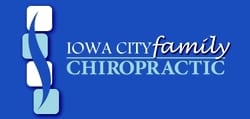Carpal Tunnel Syndrome and Chiropractic Management
Posted by Jason Cupp on Apr 20, 2012 in Carpal Tunnel | 0 commentsIowa City Chiropractor Talks about Carpal Tunnel and Chiropractic
Carpal Tunnel Syndrome (CTS) is caused by pinching of the median nerve inside the carpal tunnel in the wrist resulting numbness, tingling, and sometimes pain into the hand affecting the index, 3rd, and thumb-side of the 4th finger. Grip strength weakness may occur (usually later in the process), making dropping of items and fine motor activities, like buttoning shirts, challenging. There are many approaches to the treatment of CTS of which surgical release of the transverse carpal ligament is the most common and usually recommended by most primary care physicians when tests support the presence of CTS. But, there are alternative treatment approaches that should be utilized first because the recovery time is less lengthy and grip weakness often occurs post-surgically with approximately a 30% loss of strength. Moreover, the CTS sufferer will lose minimal or no work time when treated with chiropractic approaches, compared to a 2 to 6 week work loss time after surgery, if there are no complications. Bottom line, there are no serious side effects to chiropractic management of CTS so, why wouldn’t you try that first since there are potential side effects to the surgical approach?
So, what can you expect when you present for chiropractic management of CTS?
The history process includes how the condition started (“mechanism of injury”), the date of onset, activities that make the condition better and worse, the quality of symptoms, the location of symptoms, the severity (0-10 scale usually), and when the condition is worse (such as night time when sleeping). There are special questionnaires that ask about symptom severity and function loss which are scored and used to track progress during treatment. A pain diagram is completed by the patient that illustrates where the patient has pain, numbness or other symptoms on a map of the body. This is important as frequently in CTS, there are areas in the neck, shoulder, arm as well as the wrist and hand that are present in patients with CTS and successful management of CTS depends on treating ALL areas involved, NOT just the wrist/hand.
The examination of the CTS patient includes observing posture for a forward head position, protracted or rolled forward shoulders, muscle bulk of the arms, and if there is any abnormal spinal curvature or head tilt. The skin is also inspected for lesions, rashes, discoloration, swelling and hair loss. Next is palpation where we determine if there are any subluxations (vertebral and/or extremity joint misalignments) and/or trigger points in muscles including the neck, shoulders, arms and hands. Orthopedic tests are performed where we put the neck, shoulder, arm and hand in various positions to see if the symptoms of CTS change. These tests give us clues as to which tissues are contributing to the CTS symptoms. For example, applying thumb pressure over the carpal tunnel will often reproduce the CTS symptoms of numbness and/or pain into the index, 3rd, and thumb half of the 4th finger. When we find multiple tests that reproduce the CTS symptoms, we will know what areas require treatment as frequently, we will find a significant contribution to the CTS symptoms are coming from the neck, shoulder, and/or forearm, NOT JUST the wrist. This is why, in some cases, patients may not have a satisfying result after CTS surgery.
The treatment the CTS patient may expect at the chiropractic office includes manipulation of the neck, shoulder, elbow, wrist and hand. We will often perform muscle release techniques where pressure is applied into the muscles during stretch as well as friction massage. The use of a wrist “cock-up” splint at night is very helpful to reduce the frequency of waking up at night due to hand/finger numbness. Various physical therapy modalities such as low level laser therapy, electrical stimulation, pulsed magnetic stimulation, ultrasound, and others can also be helpful. Also, we give exercises that are extremely helpful and we frequently discuss job modifications to helps to reduce the repetitive strain that causes and can prolong the condition.
We realize you have a choice in who you consider for your health care provision and we sincerely appreciate your trust in choosing our service for those needs. If you, a friend or family member require care for CTS, we would be honored to render our services.
